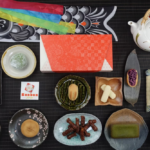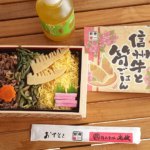“Domo arigato” is a popular Japanese phrase that means “Thank you very much” or “Thanks a lot” in English. While the meaning might seem simple, there’s more behind these words in Japanese culture. Knowing what each part of the phrase means-and how it’s used-can help you understand how important gratitude is in Japan. This phrase isn’t just a way to say thanks; it’s a reflection of manners and respect in everyday Japanese life.

Written in Japanese as どうもありがとう (Dōmo arigatō), this expression is used often, but exactly how and when people say it can change depending on the setting and relationship between the people involved. From a quick thank you for a small favor to a deeper show of gratitude, “domo arigato” and its versions play a big part in how people interact in Japan.
What does domo arigato mean?
Translation and literal meaning
The phrase “domo arigato” is a stronger way to say thank you. “Domo” is used here to make the thanks stronger, like saying “really” or “very.” “Arigato” is the standard word for “thank you.” Meaning, when you say “domo arigato,” it’s like saying “thank you very much.” Using “domo” helps show extra appreciation compared to just saying “arigato.”
Although “domo” can also mean things like “somehow” or “for some reason” in other sentences, in this phrase it only makes your thank you sound more heartfelt. Think of it as adding emotion, almost like an exclamation point in written English.
Cultural significance in Japan
In Japan, showing respect and politeness is very important. How you say “thank you” shows how much you value the other person and where you stand in relation to them. “Domo arigato” fits this system well because it sounds both respectful and sincere.
Aside from the words themselves, using “domo arigato” shows that you acknowledge and appreciate what the other person has done. It’s a way to show humility and thankfulness, and these values are key in Japanese society. Whether someone helped you a little or did you a big favor, picking the right type of “thank you” really matters in polite Japanese behavior.

How is domo arigato used in Japanese?
“Domo arigato” is common, but whether you use it-or a different version-depends on who you’re talking to and the situation. Japanese uses different levels of politeness for different people and settings, and this is clear when saying thank you.
Politeness levels and formal expressions
Japanese has a scale of polite speech. “Domo arigato” is polite, but there are even more formal ways to say thank you in Japanese, especially if you’re speaking to someone older, a boss, or a customer. In those cases, you would use “arigato gozaimasu” or “domo arigato gozaimasu.” These phrases include extra respectful words to show even higher levels of politeness.
The phrase you choose depends on how well you know the person and if the setting is casual or formal. Using an informal “thanks” with someone you don’t know well might seem rude. Doing the opposite-being too formal with close friends-can sound strange. Learning when to use which phrase takes time and practice, just like learning any language skill.
| Phrase | Japanese | Politeness Level | When to Use |
|---|---|---|---|
| Domo | どうも | Very casual | Friends, quick responses, less formal |
| Arigato | ありがとう | Casual/polite | Friends, family, same age, less formal |
| Domo arigato | どうもありがとう | Polite | Acquaintances, staff, general situations |
| Arigato gozaimasu | ありがとうございます | Very polite | Strangers, service, anyone to show more respect |
| Domo arigato gozaimasu | どうもありがとうございます | Most polite | Big favors, formal settings, older people, superiors |

When to say domo arigato instead of other thank you phrases
You can use “domo arigato” in most normal situations where you want to show honest thanks, but not get too formal. For example, if someone in a shop helps you find something, “domo arigato” is fitting. If they simply hand you a bag, a quick “domo” could be enough.
For family and close friends, simply saying “arigato” works. With people you don’t know well, “domo arigato” gives a good mix of respect with everyday friendliness. If you’re unsure which to use, “arigato gozaimasu” is almost always safe, as it’s polite and works in most cases. Try to notice how people around you use these phrases and copy their style.
Common variations of arigato: Ways to say thank you in Japanese
There are many ways to say thank you in Japanese, each with its own level of politeness and usual situations. Knowing the options can help you choose what fits best.
Arigato gozaimasu: Thank you (formal)
If “domo arigato” is polite, “arigato gozaimasu” (ありがとうございます) is one step above and works almost everywhere in Japan. “Gozaimasu” adds politeness to the main word “arigato.” It’s probably the most used thank you phrase in stores, restaurants, and when talking to strangers or people in service jobs.
Most Japanese speakers drop the “u” at the end, so “gozaimasu” sounds more like “gozaimas.” This is normal and nothing to worry about if you’re not a native speaker-just try your best, and politeness matters more than exact pronunciation.
Domo: Thanks (casual)
Used alone, “domo” is very quick and casual. It’s like a fast “thanks” between friends or coworkers. For example, if someone at work gives you a pen or helps you with something small, you can just say “domo.”
However, only use “domo” in relaxed situations or with people you don’t know well. Using it with someone you don’t know, or someone older, might sound too relaxed or even rude.

Domo arigato gozaimasu: Thank you very much (very formal)
If you want to give a really strong and polite thank you, say “domo arigato gozaimasu.” This mixes “domo,” “arigato,” and “gozaimasu” to create the most formal version. Good times to use this are when someone has done something really nice for you or helped you in an important way.
Other similar phrases are “hontoni arigato gozaimasu” (ほんとうにありがとうございます, “thank you so much”-where “hontoni” means “really”) and “makotoni arigato gozaimasu” (まことにありがとうございます, “thank you sincerely”-with “makotoni” meaning “sincerely”).
Common questions about domo arigato meaning and use
Learning Japanese often brings up questions about how to say thank you properly. Here are some questions and answers about “domo arigato.”
Can non-Japanese speakers use domo arigato politely?
Yes, you can! If you’re not Japanese, people will usually be happy to hear you try their language. Even if your phrase isn’t perfect, they’ll notice your effort and respect. People know it’s hard for learners to get every fancy detail right, so they’ll be patient.
Along with saying thank you, you can use a small bow or a friendly smile. These signals help show your real feelings even if you’re unsure of the language.
How do you pronounce domo arigato?
The phrase is spelled Dōmo arigatō in Roman letters. It’s pronounced like [doꜜːmo aɾiꜜɡatoː], where the “o” sounds are long. The “r” in Japanese sounds a bit like the American English “d” or the “tt” in “butter.”
Don’t stress too much about perfect sounds; being clear and respectful matters more, and plenty of online videos can help you listen and practice.
What are common mistakes when thanking people in Japanese?
- Using “domo” or another casual word when you should be formal, like in a store or with someone much older.
- Not changing to the past tense – for example, after getting help yesterday, you should say “arigato gozaimashita” (past tense), not “arigato gozaimasu.”
- Only using one type of thank you. Japanese has many ways to say thanks, and sometimes “sumimasen” can also show gratitude, as it’s both “excuse me” and “thank you for the trouble.”

Domo arigato in pop culture
“Domo arigato” isn’t just something you’ll hear in Japan; it’s known all over because it appears in songs, TV, and movies outside Japan too.
Domo arigato in music: Styx and others
One of the most famous uses of “domo arigato” in Western music is the 1983 song “Mr. Roboto” by the American rock group Styx. The line “Domo arigato, Mr. Roboto!” became very catchy and made the phrase popular far beyond Japan. The song is part of a story set in the future where rock music is banned.
Many people know “domo arigato” from this song or from seeing it on TV shows like “The Simpsons” or “How I Met Your Mother” or in movies like “Austin Powers.” Even though people might not always know what it means, they remember it from pop culture. Other musicians have also used this phrase, like The Durutti Column and Bonfire in some of their songs and albums.

- What Is a Maiko? - July 13, 2025
- What Does Domo Arigato Mean? - July 12, 2025
- What Does Naruto Mean? - July 12, 2025









